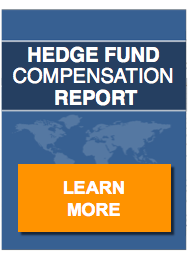You could run a hedge fund from your laptop. The way things are going, you’ll probably be able to run one from your phone soon.
But it’ll be a long time before that becomes a good idea.
The main thing investors are concerned about is returns. Still, assuming that there are others in your niche whose alpha is as high as yours, you need to assure them that your risk of outage due to technological failure is lower than the next fund’s.
Hedge fund marketing means, in part, ensuring that your information technology infrastructure is robust. And it really goes beyond marketing; there are regulatory concerns surrounding the viability of order entry, trading, portfolio management, email and other critical functions. Dodd-Frank mandates that investors rely on firms that run their IT according to “best practices”. This typically means leaving the data center operations to the pros.
Whether you call them service providers or outsourcers or co-los or “the cloud,” your data and applications have to live somewhere besides your Dell. The definition of “best practices” is left to the American Institute of Certified Public Accountants. Their new guideline, Standards for Attestation Engagements (SSAE) 16, offers structure for auditing these service providers in terms of their physical security, data security, processes and procedures. SSAE 16 replaces the old Statement on Auditing Standards (SAS) 70, which coincided with Sarbanes-Oxley.
A fledgling hedge fund partnership “could start with Google apps and email,” according to Bob Guilbert, managing director of Boston-based IT outsource service EZE Castle Integration, “but may find it difficult to attractive capital from anyone besides friends and family as they grow.”
“The due diligence operations guys have more power than they used to. They now have veto power,” says Paul Chain, president of AIS Fund Administration in Hackensack, N.J. Your IT “won’t win you the business, but it could lose you the business.”
It’s hard to say how much you need to spend on IT as a proportion of assets under management or of fees. The ratio is sure to differ from someone starting a hedge fund and someone managing an established hedge fund. There’s also a distinction to be made between the usual long-short equity fund and a manager who’s trying to finesse a more arcane investment strategy. Still, “hedge funds are very aggressive in terms of using IT,” says Guilbert, whose firm’s typical customer in the industry has more than $100 million AUM run by 12 to15 employees. “Technology is a key differentiator.”
You don’t need to be big to be differentiated, though, providing that you’re willing to ante up the basic table stakes.
“There is a bare minimum needed,” cautions Alex Chapman, Toronto-based managing director for Apex Fund Services, headquartered in Bermuda. “A system should allow [managers] to know what their position is on a daily basis, know what trades have been executed and matched and can be borrowed against.”
And all this probably involves a little more time, effort and expense than you think.
People starting a hedge fund “sometimes don’t realize all the boxes they have to check,” according to Chapman.


